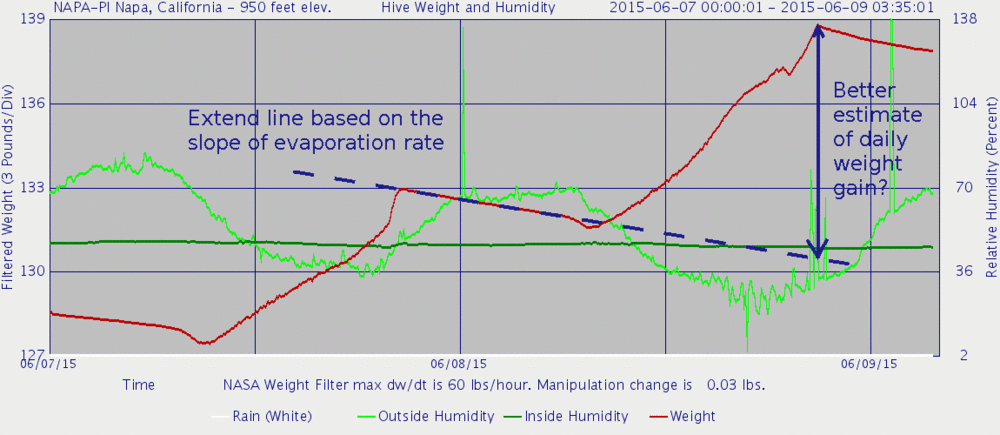Difference between revisions of "Talk:Feeding Scale Hives"
m (Paul moved page Talk:Feed adjustment of scale hive records to Talk:Feeding Scale Hives) |
|||
| (3 intermediate revisions by the same user not shown) | |||
| Line 6: | Line 6: | ||
I never though of putting my wet supers on a scale hive. That would let you measeure how efficient your extracting is. | I never though of putting my wet supers on a scale hive. That would let you measeure how efficient your extracting is. | ||
| + | |||
| + | |||
| + | "During a natural nectar flow the hive is in more or less a steady state situation with respect to nectar | ||
| + | coming in and evaporation to convert it to honey. If this goes on for several days at a more or less constant rate, | ||
| + | then the daily increase is a good measure of honey production, not nectar collected." | ||
| + | |||
| + | Really!? I'll have to think about that. Which brings up the question of how to calculate daily gain. I always thought | ||
| + | the way we do it is flawed, that it under counts the gain. | ||
| + | [[File:Weight gain.gif|thumb|1000px|Alternative weight gain calcualtion]] | ||
Latest revision as of 14:01, 9 June 2015
Awesome article.
"For polishing up wet supers, it is much better to add them to individual hives as management changes. A before and after measurement will give you an idea of how much honey they cleaned out, and it deters starting robbing in the apiary."
I never though of putting my wet supers on a scale hive. That would let you measeure how efficient your extracting is.
"During a natural nectar flow the hive is in more or less a steady state situation with respect to nectar coming in and evaporation to convert it to honey. If this goes on for several days at a more or less constant rate, then the daily increase is a good measure of honey production, not nectar collected."
Really!? I'll have to think about that. Which brings up the question of how to calculate daily gain. I always thought the way we do it is flawed, that it under counts the gain.
